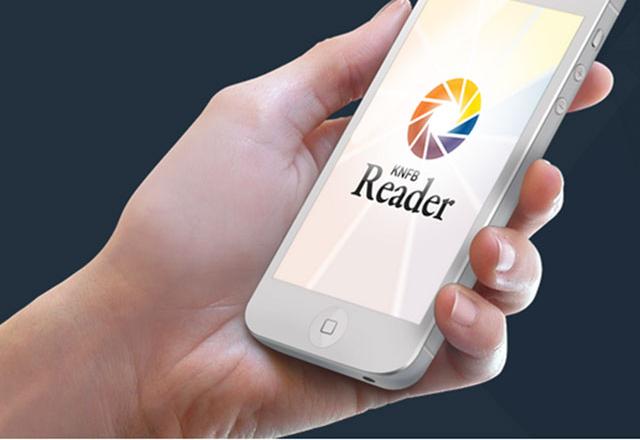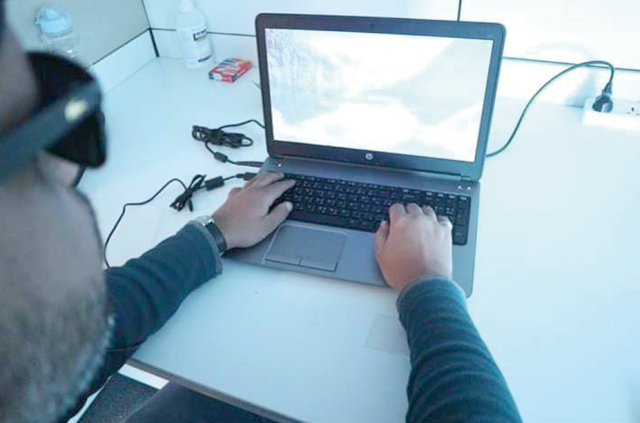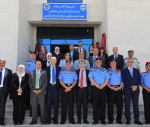You are here
Apps help the visually impaired find venues, people nearby
By Reuters - Apr 29,2014 - Last updated at Apr 29,2014
TORONTO – For the visually impaired, navigating through neighbourhoods can be a struggle, but apps aim to shed light on places, people and obstacles that lie in their paths.
There are 285 million visually impaired people worldwide, about 39 million of whom are blind, according to the World Health Organisation.
Guide Dots, a free app for Android, detects a person’s location and uses audio voice-overs to announce nearby attractions, including restaurants, shops — and even friends.
“We let people know what’s around them more than a cane can, broadening their horizon more than a six foot circle around them,” said Deborah Vandeven, global chief creative officer at VML, based in Kansas City, Missouri, which created the app.
With the app, users tap the Nearby button to hear a voiceover of places around them. They can also tag walkway obstructions, restrooms and places with good service, and share this feedback with other users of the app.
If they feel like meeting a friend, they can find out if any Facebook friends are around.
While the app is meant complement a guide dog or cane, Vandeven said it’s about giving more independence to the visually impaired. By leveraging Android’s TalkBack feature, a screen reader, people can hear the different options on the screen read aloud, and double-tap to choose one.
The app gets location data about people and places from Google Maps and Facebook Places. However, because GPS is only accurate to approximately 15 metres, the company plans to use beacon technology, bluetooth sensors that communicate location and other data to a person’s smartphone, to increase accuracy.
“This will help move you those last couple feet that for a visually impaired person could be the size of the Grand Canyon, so beacons are definitely a good use case for that,” she added.
BlindSquare for iOS is another app designed for the visually impaired to find places nearby. Users can, for example, ask for the most popular café within a 200 metre radius, or to find a post office. The app, which costs $23.99 and is available in over 15 languages, gets location data from Foursquare. It can also read out intersections while travelling.
John Corneille, director of gift planning at Foundation Fighting Blindness, a nonprofit based in Maryland, is visually impaired as a result of a condition called retinitis pigmentosa. He said that if the apps can deliver on their claims, then they might be the tools he’s been looking for.
“GPS on cars can be set to announce what street you’re approaching, or points of interest as you go, but I haven’t found an app that does those things accurately enough when you’re walking,” he said.
Corneille, who also practises law, said that he uses many apps daily, including the VoiceOver function on his iPhone, which does text-to-speech, and Siri to dictate e-mails and texts.
“My assessment is that there are a lot of apps available and most of them are very good. They really have a practical use and function for the visually impaired, and I’m thrilled that they’re being offered,” he said.
“If you’re visually impaired there’s no better time to be that way,” he added.
Among other apps available for the visually impaired, TapTapSee, free for iOS and Android, allows people to snap a photo of an object to determine what it is. For iOS, LookTel Money Reader, $9.99, speaks out currencies in different denominations, and Colour ID, free, can help them figure out the color of a shirt or pair of socks.
Related Articles
Advocates for the blind are debating whether to use a carrot or a stick to persuade one of their oldest allies, Apple Inc, to close an emerging digital divide in mobile technology.
Jonathan Mosen, who has been blind since birth, spent his evening snapping photos of packages in the mail, his son’s school report and labels on bottles in the fridge. In seconds, he was listening to audio of the printed words the camera captured, courtesy of a new app on his Apple Inc. iPhone.
AMMAN — In this era of information, accessibility should be a priority in website design to allow for more inclusive opportunities for
















